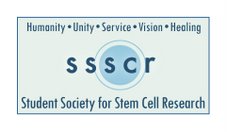November 23, 2007...9:36 am
On the Verge of Something Big
Eric Chiao is a scientist at Stanford's Institute for Stem Cell Biology and Regenerative medicine. Along with his research, he teaches in Stanford's Center for Human Embryonic Stem Cell Research and Education, and was responsible for deriving its first embryonic stem cell lines.
by Eric Chiao, Ph.D.
When the news about the new discoveries first hit, I immediately wondered how it would effect me. I realized that there would be a flurry of disease specific induced pluripotent stem (iPS) cell lines. Then I started thinking about how it would be politically manipulated to restrict human embryonic stem cell (hESC) research. I spent most of my mental energy devising philosophical arguments for the continued support of hESC research.
On Tuesday, I got an e-mail from a friend, who forwarded me Shinya Yamanka's Cell paper. He asked jokingly how long it would take me to get some iPS cells. I replied somewhat tongue-in-cheek that apparently it would take about 20 days (Yamanka reported seeing colonies of embryonic stem cells at 25 days).
Since I've sent that reply, I've come to believe that we are one the verge of a new phase in biomedical research. As basic researchers, we exploit the power of model systems (using lower animals such as worms, flies and mice) as much as possible. In the past, basic research with mouse embryonic cells trumped human embryonic cells because we could easily mutate and change the mouse genome. The hope for human embryonic stem cell research was based on translation: the (relatively) minor differences in regulatory pathways between mice and humans, and eventually, from the lab to the clinic.
When Yamanka announced he had made the first mouse iPS cells in July, it was cool, but you could already manipulate the mouse genome, such as using "knock out mice" to render a gene inoperable, and then observing the effect. So it didn't change the direction of anybody doing research outside of the "reprogramming" field.
But a human "model system," has, until now, been out of reach for basic biomedical research. What we have in humans is a huge population of pre-made mutants'a wide range of genetic predispositions for diseases and disorders, such as cancer and aging. This makes us the species of choice for devising medical treatments.
It's true that technical hurdles must be overcome before we can use these cells for tissue replacement therapies. But the fact that human iPS cells can presumably make all the normal adult cell types means that we now have within our grasp (to borrow the mouse lingo) all of the "constructs" to make embryonic stem cell lines for every human genetic disorder in just 20 days. ; ) These "diseases-in-
We may see the ascendance of these new discoveries as a model system, on par with the path-breaking work made in mice made over the last twenty-five years.
But only much faster.
Change settings via the Web (Yahoo! ID required)
Change settings via email: Switch delivery to Daily Digest | Switch format to Traditional
Visit Your Group | Yahoo! Groups Terms of Use | Unsubscribe
__,_._,___










